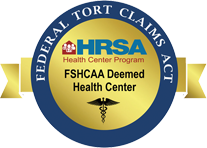Suicide risk factors and preventative measures. Suicide has become the tenth leading cause of death in the United States and the seventh leading cause of death in Idaho (American Foundation for Suicide Prevention).
This is a difficult topic to talk about and is surrounded by stigma and myths. Most people do not know how to respond when someone says they are feeling suicidal.
Most people do not know the risk factors for suicide and what we can do to protect ourselves from suicidality. To reduce stigma and bring more awareness, we need to talk about suicide more. So, we are going to talk about the risk factors and preventative factors for suicide.
If you are currently feeling suicidal please contact 1-800-273-8255 or text HOME to 741741 to speak with someone now. To start, the CDC defines suicide as: death caused by self-directed violence with an intent to die; they also note that it is preventable.
Risk factors are characteristics that make someone more likely to struggle with suicidal thoughts and actions. The research currently says people most at risk are middle-aged and struggling with mental health (SAMHSA).
The CDC, SAMHSA, and American Foundation for Suicide Prevention all provide a list of risk factors. You can visit American Foundation for Suicide Prevention for the complete list (https://afsp.org/risk-factors-and-warning-signs). Risk factors can be put into three categories: health, environmental, and historical factors.
Health risk factors are mental health conditions like depression, anxiety, bipolar, or substance use problems. Also include as risk factors are personality disorders, which can cause mood changes and relationship issues.
Not everyone with a mental health condition struggles with suicidal thoughts, it just makes it more likely that they might struggle. Other health issues would include chronic pain, physical health issues (cancer, diabetes, heart disease), and traumatic brain injuries. Physical health issues impact our ability to do the things we use to on a regular basis.
If they cause us to lose independence, a job, or ability to do what we once did, it can create feelings of worthlessness, hopelessness, or helplessness.
These are key feelings that lead people to act upon suicidal thoughts. So, please do not underestimate health issues, as they are very stressful.
If it’s a new diagnosis or an old one that has gotten worse, it’s normal to feel down, mad, or frustrated and need extra support. Reach out to family, friends, doctors, or a counselor for support.
Environmental risk factors mean the things around us. If someone has been experiencing stress for a long time because of ongoing relationship issues, job dissatisfaction, harassment, divorce, financial crisis, or other major life changes, this can increase risk.
That stress wears on people over time and our ability to cope with it. Even positive life changes like buying a house or having a child can be very stressful and lead to suicidal thoughts because it is overwhelming and can result in someone feeling alone.
Another example of environmental risk factors is exposure to someone else’s suicide or accounts of suicide. Lastly, are historical risk factors. These are short and to the point. If you have attempted suicide in the past, you’re at greater risk of continuing to battle with suicidality.
If you have experienced childhood abuse, neglect, or trauma, your risk is higher. And, if there is a family history of suicide, you also have a higher risk. That means attempting suicide puts your loved ones at a higher risk of also attempting suicide.
Brittany graduated with her Master of Social Work from Michigan State University in 2014. She uses a wide verity of evidenced-based therapy models, whichever best meets her client’s needs and goals. She is passionate about helping people achieve their goals and understands coming to therapy can be difficult or scary.








